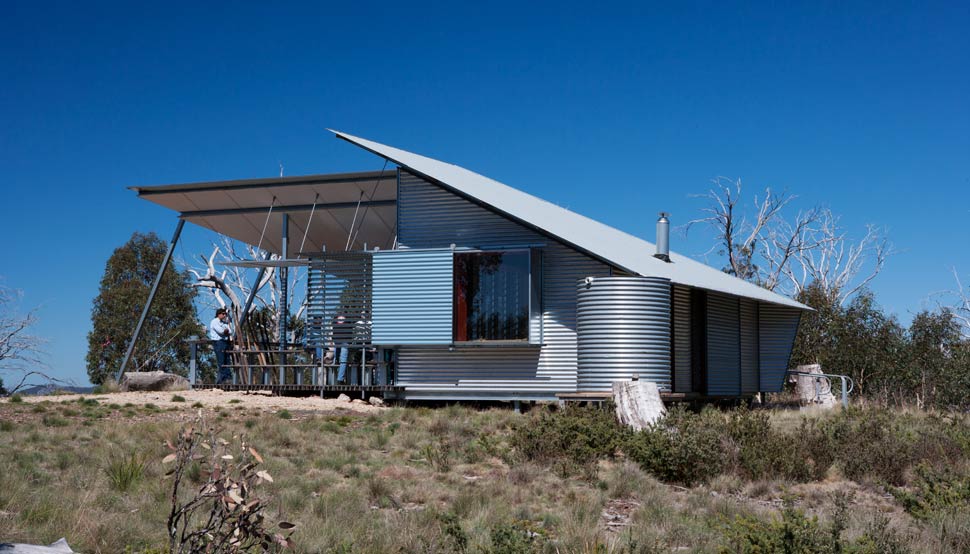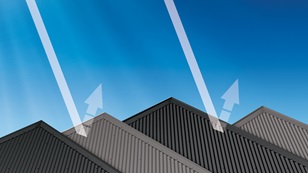Thermal efficiency of COLORBOND steel roofing
A roof made from COLORBOND® steel can make a valuable contribution to the overall thermal efficiency of your home, which is good news for your hip pocket and the environment.
Touch The Earth Lightly
Sustainable design is all about designing and building homes that have a reduced impact on the environment.
That means, in part, using long life materials that are recyclable and low maintenance.
COLORBOND® steel falls into that category, which is why it's recognised as a key component of 'green' housing and features on so many award winning, environmentally friendly houses.
Energy Efficient Roofing
Using thermally efficient roofing materials like COLORBOND® steel can help you reduce your cooling costs. In summer, a lightweight insulated roof made from COLORBOND® steel causes less heat to be radiated into your home at night. That's because steel has a low thermal mass, so it cools down fast once the sun is off it.
In winter the same steel roof, properly insulated, helps keep the heat inside. The choice of colour can also influence thermal performance. Lighter colours, in particular, radiate less heat during summer.
COLORBOND® steel now includes Thermatech® technology, enhancing its position as the energy efficient roofing material.
Designing A 'Green' Home
The choice of roofing material is only one factor to consider when designing a 'green' home.
Others include:
Orientation, the direction your home faces in relation to the sun. If your home faces true north, with its living areas at the front, you can flood those living areas with warming winter sun. During summer, when the sun sits higher in the sky, correctly designed eave-overhangs will ensure your north-facing windows are less exposed to direct sunlight.
- Ventilation. Well-positioned windows and doors allow you to take advantage of the naturally cooling effects of summer breezes. Louvres can also be good for promoting air movement on hot days.
- Thermal mass. This term refers to a material's ability to store heat. Including thermal mass inside your home can be a good idea. It allows you to trap the heat generated by sunlight coming in through your windows, and release it slowly at night to naturally warm your home. Floors and internal walls with high thermal mass are ideal for this purpose. In summer, these surfaces can be protected from the sun by the eaves on the outside of your home.
Of course there's no way to keep the sun off your roof in summer, so it makes sense to use a roofing material with low thermal mass, like COLORBOND® steel.
- Insulation. Insulation in walls and ceiling spaces can affect the amount of heat entering or leaving your home.The level of insulation required will vary depending on what roofing and walling materials you choose and whereabouts they are located.
Building Codes And Regulations
Both the Building Code of Australia (BCA) and the New South Wales Building and Sustainability Index (BASIX) classify colours into light and dark according to their solar absorption rates.
For more information view our page on Colour Classification for BCA and NSW BASIX.


